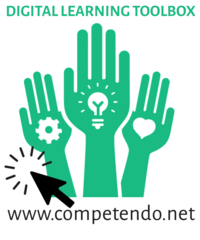Arts Education
Artistic and cultural expression are valuable resources for stimulating creativity and broadening the learners' ability to perceive and express. On a social level cultural activities and products are a mirror of our values and norms, our social diversity, our heritage and visions for the future. Recognizing this role of arts and culture for our lives, UNESCO seeks with the Seoul Agenda to develop a holistic conceptual frame for arts education.[1] It has two main elements.
Contents
learning through the arts/culture
Utilizing artistic expressions and cultural resources and practises, contemporary and traditional, as a competency learning tool under an inter-disciplinary perspective.
learning in the arts/culture
Stressing the value of cultural perspectives, multi and inter-cultural, and culturally-sensitive languages through learning processes, as a tool for promoting the idea of cultural diversity.
Quality Criteria for Arts Education
The starting point is a creative learner, being able to initiate new things and to shape processes and works. Arts Education is supporting learners then with the tools and skills offered through arts and cultural work. The German Federal Association for Cultural Youth Education [2] developed basic quality standards rooted in the idea of competency centered facilitation.
Arts and cultural expression as a starting point and frame
Works, processes and methods are instruments for autodidactical learning resulting from aesthetic perception and experience. Perception and creative activity are put into dialogue. They are enriched by reflection. A diversity of forms and styles allows learners to broaden their repertoire for expressing and ideating.
Resource Orientation
Existing strengths and talents of learners are in the centre. The main focus is set on the activation of individual potentials by strengthening the strengths and talents. Topics and subjects are through the learners perceived as interesting and inspiring. There is a connection of the subjects to the social reality of learners. The decisions on the way an educational process takes and what kind of instruments it uses are a result of a participatory negotiation. The individual ways of (youth)cultural expression are appreciated.
- More: Resource Orientation
Participation
Learners are perceived as experts on their educational process and co-create it, including the choice of topics, questions and ways of work. They are not enforced to participate. The processes stimulate learners to take a stand, to discuss their positions in dialogue and learn to involve in group decisionmaking. Learners experience self efficacy and are perceiving their ability to create works in a successful way.
- More: Empowerment
Personal Competency Development
A mix of emotional, cognitive and social learning and a variety of methods and opportunities for expression is involved.
- More: Method Mix
Diversity and Inclusion
Individuality and social diversity are appreciated. The learning process makes use of multiperspectivity. Diverse needs are respected and the learning space is shaped according to these needs of individual learners.
- More: Diversity: Definition
These criteria show that artistic processes are, even if they are collaborative, not necessarily suitable for art education. The idea of artistic mastery and leadership sometimes conflicts with the ideal of empowerment as a tendencially open process. A strong result or product orientation can conflict with needs orientation. The role of a curator, instructor, artistic advisisor, director or dirigent needs to be completed through the pedagogical attitude of a facilitator. The process design of educational arts projects needs to include space for group experience and reflection, for individual learning curves and for cooperative learning.
Creativity
Creativity is an ability that helps us process the wealth of information that our minds collect and forge connections between different pieces of information in order to find a solution to a problem in a new way, or to come to a new understanding of the problem itself. It is a fundamental aspect of creation, a proactive and future-directed process involving intellectual, material and social resources.
Creative Facilitation at Competendo:
More background information and methods for stimulating creativity and designing creative learning processes: Unleashing Creativity
Drama and Play
Theatre reflects the reality and shows us different points of views and interpretations of life. At the same time, theatre is always reflection for the actors as well as for the audience, no matter if played in a official theatre, on the street or in a classroom. The audience recognizes themselves in the magical space that is shown on stage. By changing the perspective, actors can recognize stereotypical behaviours easier and thus find alternative ways of acting in problematic situations. This way theatre can help to clarify situations in a playful manner.
In addition to that the playful and unconscious way of dealing with the foreign language helps to overcome inhibitions to speak or to present oneself during the seminar. Acting and laughing together creates an atmosphere of trust. Finally, fun and a good feeling for the group are important things for every seminar.
In order to be able to use the different ways of expression which the theatre offers, the participants have to make their body able to express itself and therefore they have to know their body very well. Only at this stage different forms of theatre can be used and the participants can leave step by step the audience and become actors themselves. This is the only way how participants cab become subjects instead of objects and develop from witness of a happening to protagonists. This development from spectator to actor happens in different phases. The introduction to theatre is therefore exercise and experiment with the own Body.
Articles, Checklists and Methods
References
- ↑ UNESCO: Seoul Agenda: Goals for the Development of Arts Education
- ↑ Bundesvereinigung Kulturelle Jugendbildung: Arbeitspapier „Aufwachsen mit Kunst, Kultur und Spiel. Qualitätsmerkmale für die Kulturelle Bildung
All Methods:
Standard Building Blocks:
Educational Fields:
- Active Citizenship Education
- Human Rights Education
- Digitalisation
- Education for Sustainable Development
- Project Development
- Unleashing Creativity
- Global Learning
- Game-based Learning
- Language Animation
- Mentoring
- Entrepreneurship Education
- Arts Education
Download: Banner
Related:
N. Zimmermann, E. Leondieva, M. Gawinek-Dagargulia
Creativity
Handbooks for Facilitators #4: Read more






